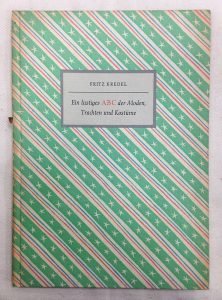
Fig 1. Bird’s eye view of The Mary Rose Museum (image by Hufton+Crow)
Fashion and Dress History graduate (2012) Josephine Payter-Harris on working at The Mary Rose Museum

Fig 2. The Mary Rose Museum: cafe and reception (image by Hufton+Crow)
Since graduating I have developed a career doing what I love: working in the museums and heritage industry. I am currently part of the management team at The Mary Rose Museum, Portsmouth. Whilst studying for my degree, my end goal was to secure a job either working in costume for TV and film, or to go into the world of galleries and museums. I was (and still am!) completely passionate about period costume, and completed my dissertation on the use of historical costume in period film. Throughout my studies I worked to build up a good level of skills within these areas, so that when I came to graduate, I had a range of experience to add to my CV.

Fig 3. The Mary Rose Museum: Lower Deck Museum Gallery, Lower Deck, showing Tudor brick oven (image by Hufton+Crow)
Work in museums, particularly curatorial and behind the scenes, is hard to break in to. As such I volunteered at several small, local museums and was able to get some fantastic hands-on experience. I undertook a voluntary placement with the Flora Twort Gallery, which houses a beautiful collection of period dress. I dated, researched and archived this collection, and was able to get some ‘white glove’ curatorial experience. I later completed an unpaid placement with Historic Royal Palaces as part of the team to help research costumes for the ‘Fashion Rules’ exhibition at Kensington Palace. Volunteer placements like this are such a good way to help your CV stand out to employers, and a great way to get your foot in the door.

Fig 4. The Mary Rose Museum: Main Deck Museum Gallery (image by Hufton+Crow)
In my final year, I applied for graduate internships at museums and galleries, and anything to do with costume in TV and film. I lucked out and was offered a four week unpaid placement at a production company based in London. My role was to assist the costume and set design runners for location filming, set dressing and costume for historical docu/dramas. I took on everything I was offered, with a flurry of enthusiasm, and was offered further paid work which I gladly accepted.
After a time, I decided to shift my focus to museum work. I secured a paid internship at a small art centre and museum: The Spring, an independent organisation based in Havant. This internship enabled me to develop skills in curation, exhibition planning, marketing, installation, and the organisation of large historically-themed open days, lectures and art/crafts workshops. I progressed from intern to Museum and Participation Assistant, and thrived in a creative and unique organisation. I took on a second job working for English Heritage (now Historic England), starting off as Historic Property Steward, and developing into Site Duty Manager. This was my first experience working within a large, commercial heritage organisation, and I took on all the training, development and opportunities that were available.

Fig 5. The Mary Rose Museum: Upper Deck Museum Gallery (image by Hufton+Crow)
In 2014 I was offered a job at The Mary Rose Museum, where I am currently based. The Mary Rose is a world class visitor attraction which receives over 400,000 visitors a year. The museum is home to King Henry VIII’s warship, which sank during the Battle of the Solent, 1545. The ship and over 19,000 artefacts from every day Tudor life were recovered and raised in the 1970s and 80s. The ship sits at the heart of a state of the art museum, which was opened to the public in 2013. My current role, as Front of House Manager, means I manage the day to day running and flow of the museum and a team of 34 museum staff and look after over 100 volunteers; I oversee aspects of the museum such as ticketing, retail sales, recruitment, staff training, development and personnel – so I am certainly kept busy!

Fig 6. The Mary Rose Museum: View from within Ship Hall, showing ship from the stern (image by Hufton+Crow)
What I love about my work here is that no two days are the same; you have to be flexible, adaptable and ready to deal with all kinds of quirky challenges. My degree certainly laid the foundations for my career, and instilled in me a creative way of thinking, problem solving and a keen sense of attention to detail. Without it I don’t think I’d have the mix of diverse skills and experiences to date which have led me to my current position.
My advice to students aspiring to work in this field is always to put yourself forward, don’t turn down opportunities, even if it means taking unpaid placements. Grasp work and keep striving to learn and develop, don’t pigeon-hole your aspirations, have goals, but be prepared to take a winding road to achieve them, accept that nothing is straightforward and every job will be hard work. Volunteer at smaller organisations, work your way up, take every chance you can get to gain skills and experiences which will make you stand out.
I take pride in my work and feel genuinely lucky to be where I am, my hopes for the future are to keep on moving upwards and onwards within the museum and heritage sphere and to continue to work for organisations which inspire and instil passion.














![Ein lustiges ABC der Moden, Trachten und Kostüme (A merry ABC of fashion, folk dress and costume) by Fritz Kredel [n.d.]](https://blogs.brighton.ac.uk/hoad/files/2018/05/FritzKredel-EinLustigesABCDerModen2cTrachtenUndKostume-cover28detail29sm-21o60xk-300x225.jpg)

![T & U ‘Tournure was worn at the time- the toga was the Roman’s dress. Uhlan whip the ladies gladly- the Ulster coat for a quality Gentleman.’ Ein lustiges ABC der Moden, Trachten und Kostüme, Fritz Kredel [n.d.]](https://blogs.brighton.ac.uk/hoad/files/2018/05/FritzKredel-EinLustigesABCDerModen2cTrachtenUndKostume-pp24-25sm-1c68mzg-300x218.jpg)
